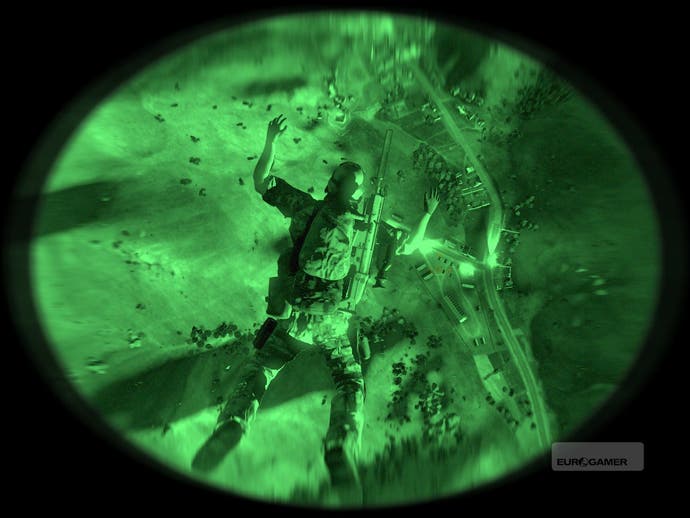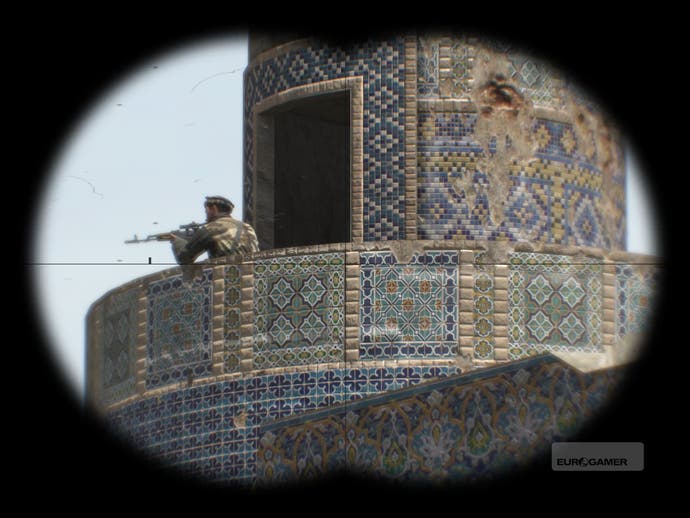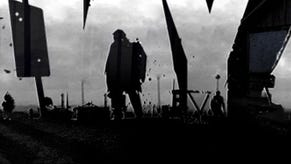ArmA II: Operation Arrowhead
Dun and dusted.
"What exactly can we expect from the Arrowhead campaign?"
Six helpings of solid ArmA II action. You are part of Task Force Knight, a US-dominated coalition force sent to fictional Takistan to remove Colonel Aziz and his evil war-mongering regime. In the guise of four utterly forgettable characters you'll undertake special forces missions, fly helo gunships, command tanks, rescue hostages, and do a host of other soldierly stuff. As you'd expect from the series, the battlefields are usually vast, the realism level high, and the tactical options abundant.
"Only six missions?"
Yes, we deserved more, but bear in mind there are also seven single scenarios and the ever-wonderful editor to toy with. Though those single missions tend to be on the brief side (few take longer than 10 minutes to complete) they do a decent job of showcasing some of the new vehicles and equipment.
In Death From Above, for example, you can preserve your Apache by using an unmanned Little Bird (ULB) chopper to spot and lase targets. Nailing the enemy general in One Shot, One Kill involves use of new FLIR-equipped sniper rifle with sight zeroing capability, and Laser Show illustrates just how atmospheric night missions can be when the sky is starry and every friendly has a PEQ laser pointer lashed to his gun barrel.

"Is any of this new equipment truly indispensable?"
Débutante aircraft like the Chinook, and AFVs like the Bradleys and Strykers, all fulfil familiar roles, and thus don't add a lot to your tactical toolbox. ULBs with their powerful cameras and simplified remote controls do offer a genuinely new attack option, albeit a rather cold, clinical one.
In terms of utility, it's the thermal imaging systems that probably have the biggest impact; after all, it's hard to hide from a warrior who can see every heat source at a glance, be it a warm wheel hub, a sweat-beaded brow, or an insomniac chicken. FLIR sights will even function in the sweltering heat of a Takistan noon or when blocked by smoke clouds. Realistic? Apparently so. The only flaws I've spotted are minor ones. The modelling doesn't appear to simulate corpse cooling, weapon heating, or extend to some units from the original ArmA II.
Another small but significant addition to the quartermaster's store is the backpack. As in essential ArmA II mod, ACE2, it's now possible to enlarge your inventory with a capacious bergen, and strip down heavy weapons into their component parts. Chanced upon an enemy mortar pit or MG nest and want to take the armament with you as you advance? Disassemble it through the action menu, then assign the resulting backpacks (there's always two) to your men. It would have been great had the backpacks been part of an an improved fatigue system. Perhaps next time.

"Sir, is it true what they say about the Takistanis?"
If you're referring to the piece of scuttlebutt that claims they castrate prisoners using opium-addled mongooses, the answer is "no". If you're asking if they possess SCUD missiles and primitive nuclear weapon technology, the answer is "quite probably".
The Takistani regular is, in most respects, a bog-standard ArmA II foe. On foot he skirmishes skilfully, despite the fact he rarely uses building interiors or abandons untenable static weapons. His Russian-sourced tanks and aircraft are old but will make short work of your IFVs, given half a chance.








